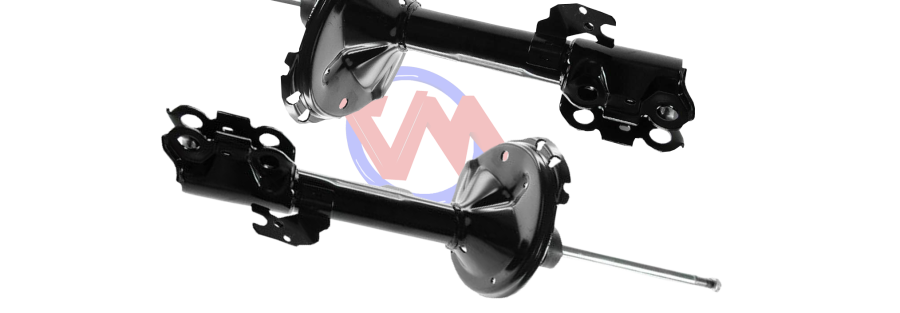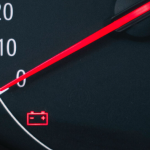Ever had that heart-stopping moment hitting a pothole with a bad shock absorber on a less-than-friendly road? If you have, you know it’s a jarring experience that could rival any amusement park ride (minus the joy). Shock absorbers are unsung heroes of your vehicle’s suspension system, ensuring a smooth and controlled ride, even on bumpy terrains. Let’s delve into the world of shock absorbers, exploring their various types, primary uses, faults and the crucial factor of durability.
As we start looking at how shock absorbers work, our main goal is to grasp how wear occurs and uncover the reasons that quietly make them work less effectively over time. Think of your car’s shock absorbers like actors in a long-lasting show, facing specific challenges that, when left unattended, can compromise the smoothness and control they bring to your ride. Let’s dig into the story of wear in shock absorbers, unveiling the silent factors responsible for their gradual decline in performance.
Table of Contents
Primary Uses
Shock absorbers serve several crucial purposes:
1. Dampening Vibrations
They absorb and dampen vibrations caused by uneven road surfaces, providing a smoother and more comfortable ride.
2. Maintaining Tire Contact
By preventing excessive bouncing, shock absorbers help maintain constant contact between the tires and the road, ensuring optimal traction and control.
3. Enhancing Vehicle Stability
They contribute significantly to the stability and handling of the vehicle, especially during sudden maneuvers or when driving at high speeds.
Types of Shock Absorbers
1. Conventional Telescopic Shock Absorbers
These are the most common type, featuring a hydraulic cylinder connected to a piston that moves in and out of the cylinder. They provide a reliable and cost-effective solution for most vehicles.

2. Gas-filled Shock Absorbers
Filled with nitrogen gas, these shocks offer improved heat dissipation and are less prone to aeration. This makes them suitable for high-performance and off-road vehicles.

3. Air Shock Absorbers
Adjustable and found in luxury vehicles, air shocks use compressed air to adapt to different driving conditions. Drivers can often adjust the stiffness to their preference.
4. Strut-Type Shock Absorbers
Combining the shock absorber and suspension coil into a single unit, struts simplify the suspension system and are common in many modern cars.


Causes of Reduced Performance in Shock Absorbers
Now that we’ve taken a thrilling joyride into the fascinating world of shock absorbers, let’s park for a moment and investigate the factors that can lead to reduced performance. Your shocks, much like performers, have their limits, and understanding the causes of wear and tear is crucial for maintaining a top-notch act.
1. Terrible Road Conditions
Shock absorbers endure a lot on the road, especially in regions with challenging terrains or poorly maintained roads. Potholes, uneven surfaces, and rough roads can accelerate wear, causing shocks to lose their effectiveness over time.
2. High Mileage Performances
Just like a seasoned performer, a vehicle accumulating high mileage undergoes wear and tear. Shocks have a lifespan, and the more they’ve been on the road, the more likely they are to show signs of reduced performance.
3. Lack of Regular Maintenance
Performers need rehearsals and touch-ups; shocks need regular inspections and maintenance. Neglecting routine checks and maintenance can lead to undetected issues, causing shocks to underperform.
4. Bad Driving Habits
Some performers thrive in controlled environments; shocks prefer smooth, controlled driving. Aggressive driving, sudden stops, and hard impacts can strain shock absorbers, accelerating wear and compromising their ability to provide a smooth ride.
5. Environmental Factors
Just as weather affects an outdoor performance, environmental factors impact shock absorbers. Exposure to extreme temperatures and high moisture levels can contribute to corrosion and deterioration, diminishing shock performance.
Understanding these causes of reduced performance is like reading between the lines of your vehicle’s script. By recognizing and addressing these factors promptly, you can extend the longevity of your shocks and ensure that every performance on the road is a smooth and controlled act.
Identifying Faults and Signs of a Faulty Shock
Now, let’s delve into the critical aspect—the faults and indicators of a malfunctioning shock absorber. Envision your shocks as meticulous performers; the signs of an unsatisfactory performance include:
1. Excessive Bouncing
If, upon encountering road irregularities, your vehicle exhibits a level of rebound resembling an audition for a bounce house commercial, it is indicative of potential issues with the shock absorbers. Excessive bouncing not only compromises ride comfort but also suggests a need for careful scrutiny and potential corrective measures.
2. Uneven Tire Wear
The emergence of uneven tire wear patterns mirrors a misalignment in the choreography of your vehicle’s movements. Faulty shock absorbers contribute to irregular tire wear, a phenomenon detrimental not only to tire longevity but also to overall road safety. Addressing this issue promptly is imperative to maintain tire integrity and ensure a stable driving experience.
3. Oil Leaks
Drawing an analogy to a superhero with a compromised suit, the presence of oil leaks beneath your vehicle is a matter of concern. Efficient shock absorbers should not leave telltale signs on the pavement. The occurrence of oil leaks suggests potential internal damage, necessitating a thorough examination and, if required, a replacement to restore optimal functionality.
In the realm of vehicular performance, these signs serve as red flags that warrant the attention of a qualified professional. Recognizing and addressing these indicators in a timely manner not only preserves the longevity of your vehicle’s components but also contributes to enhanced road safety and driving confidence.
The Three Bounce Test
Want to know if your shocks are stealing the show or staging a revolt? Try the Three Bounce Test:
Push Down Firmly: Give each corner of your car a firm push down.
Release Quickly: Let go and watch how your car responds.
Count the Bounces: A well-behaved shock will give you a controlled bounce or two. Anything more, and it might be time for an intervention.

Durability and After-Sales Considerations
The durability of shock absorbers is influenced by factors such as material quality, design, and usage conditions. Original equipment manufacturer (OEM) shocks, while more expensive, are often engineered to precise standards, ensuring longevity and optimal performance.
It’s noteworthy that after-sales shocks, while more budget-friendly, might not match the durability of the manufacturers’ originals. At Vonos autos, we understand the importance of reliable after-sales spare parts. We go the extra mile in sourcing the best quality after-sales shock absorbers to provide you with options that balance durability and cost-effectiveness. Our commitment is to ensure your vehicle’s suspension system operates at its best, delivering both comfort and performance on every journey.
Understanding the nuances of shock absorbers empowers vehicle owners to make informed decisions when it comes to maintenance and replacements. Whether you opt for the precision of OEM shocks or the carefully selected after-sales alternatives, our team at Vonos autos is here to ensure your ride remains smooth and your safety is never compromised.





